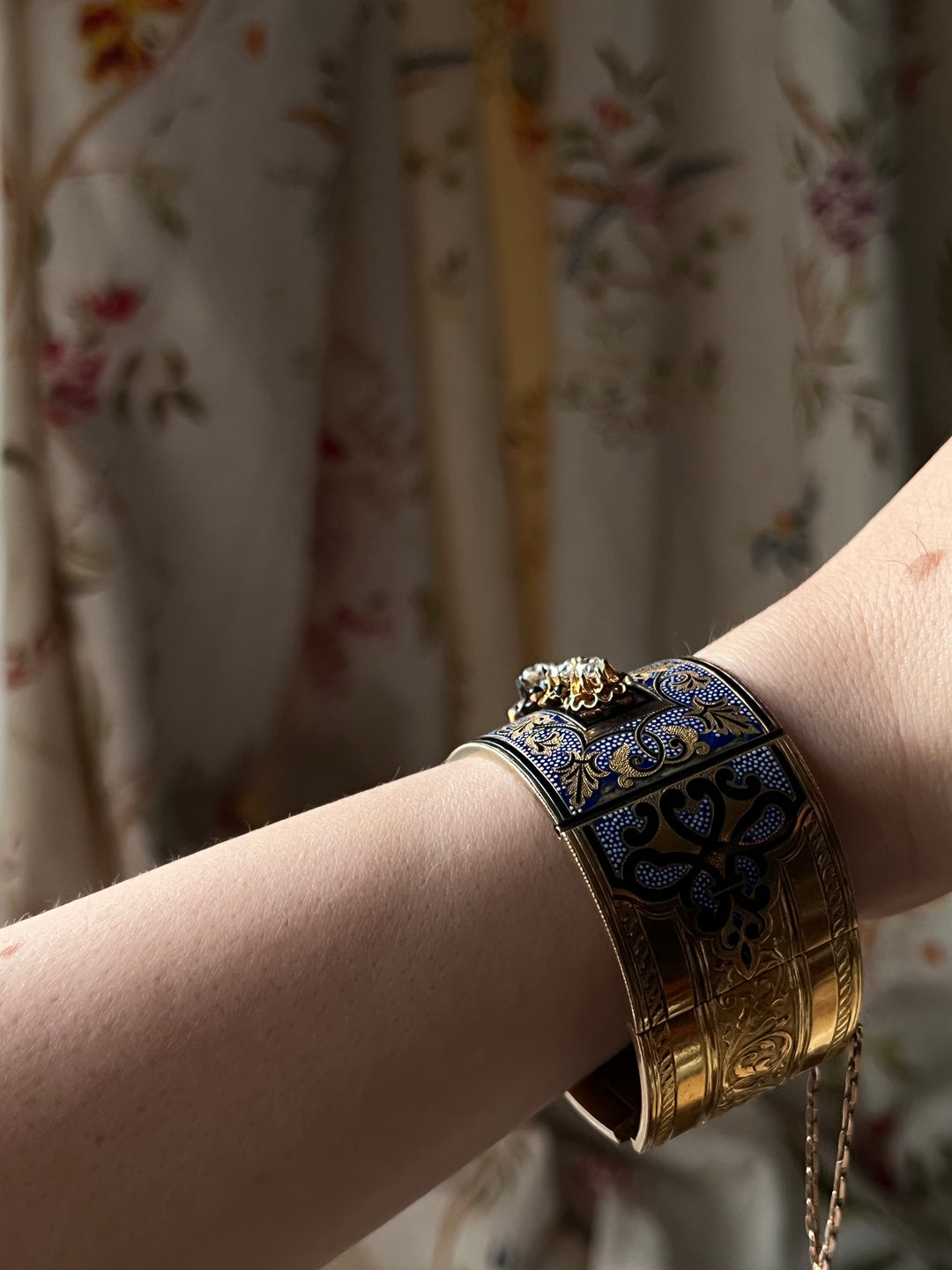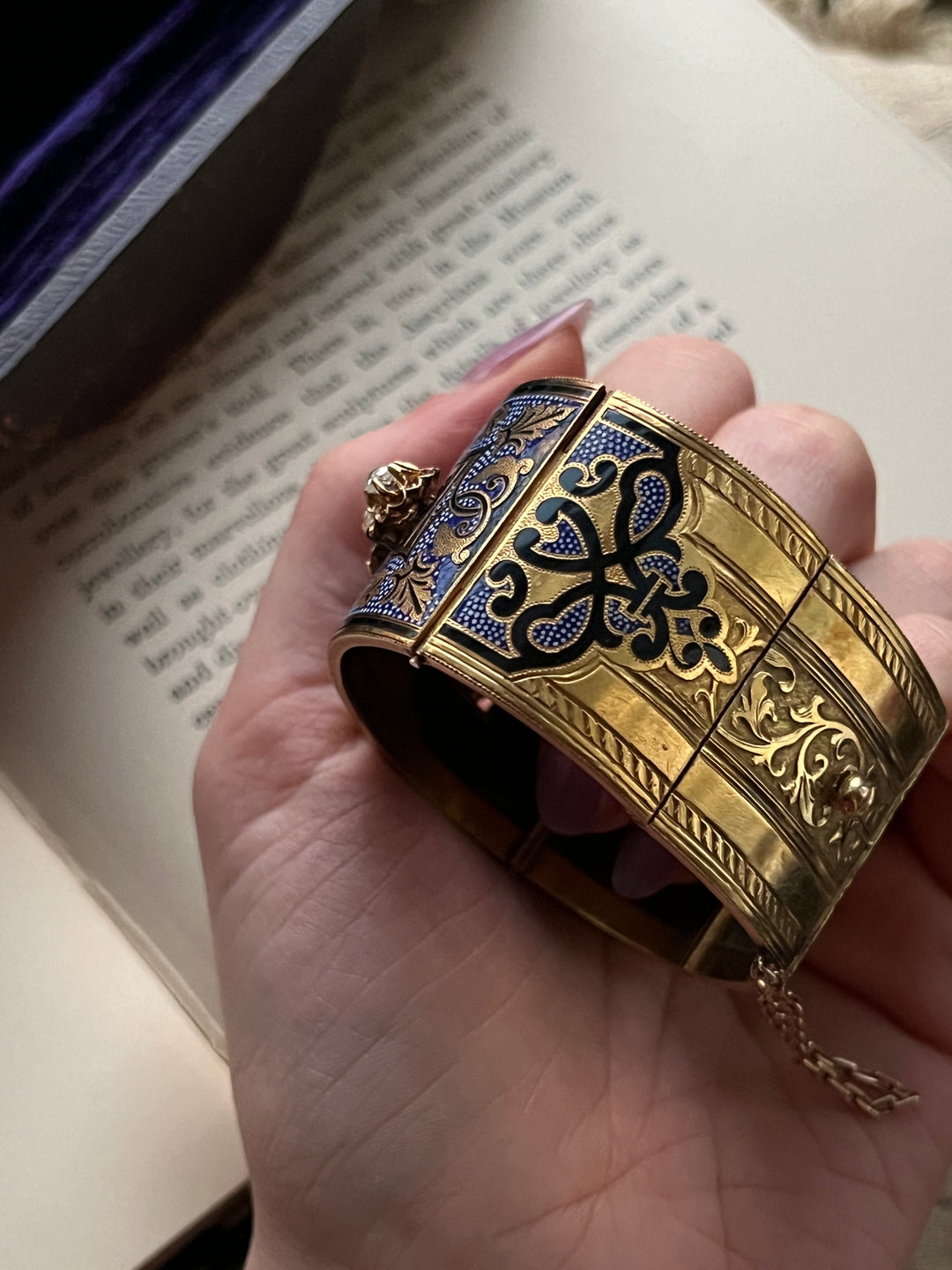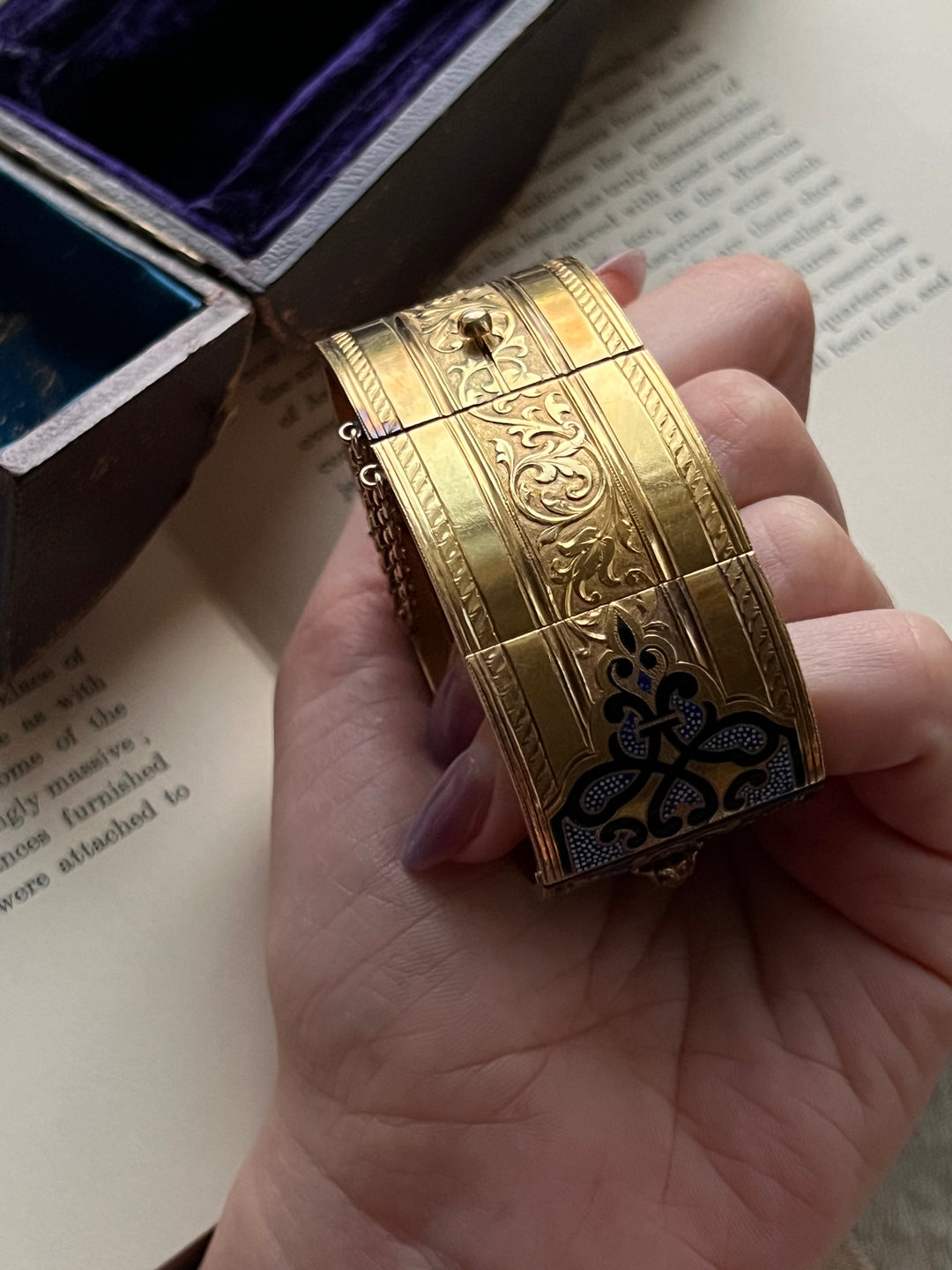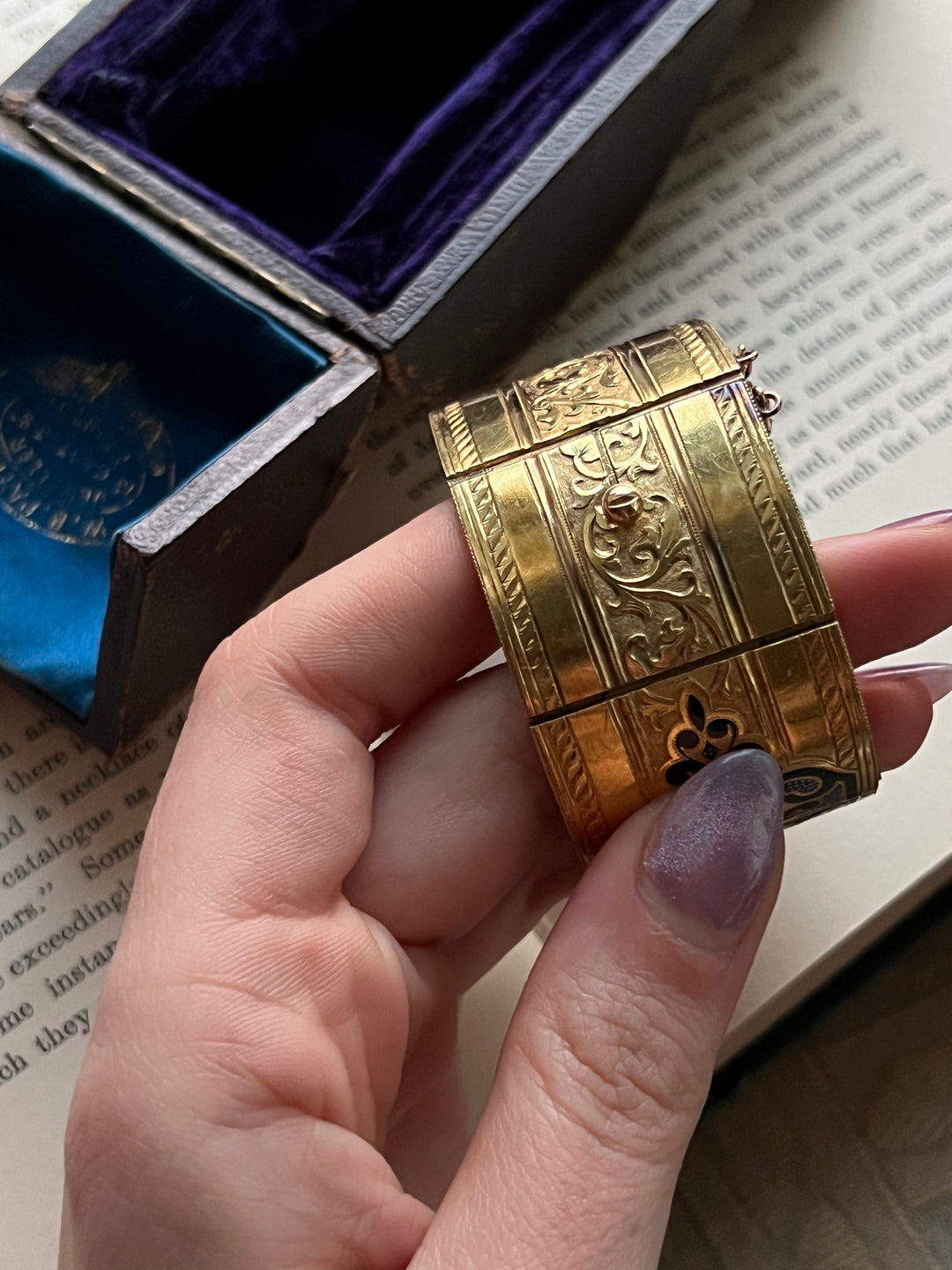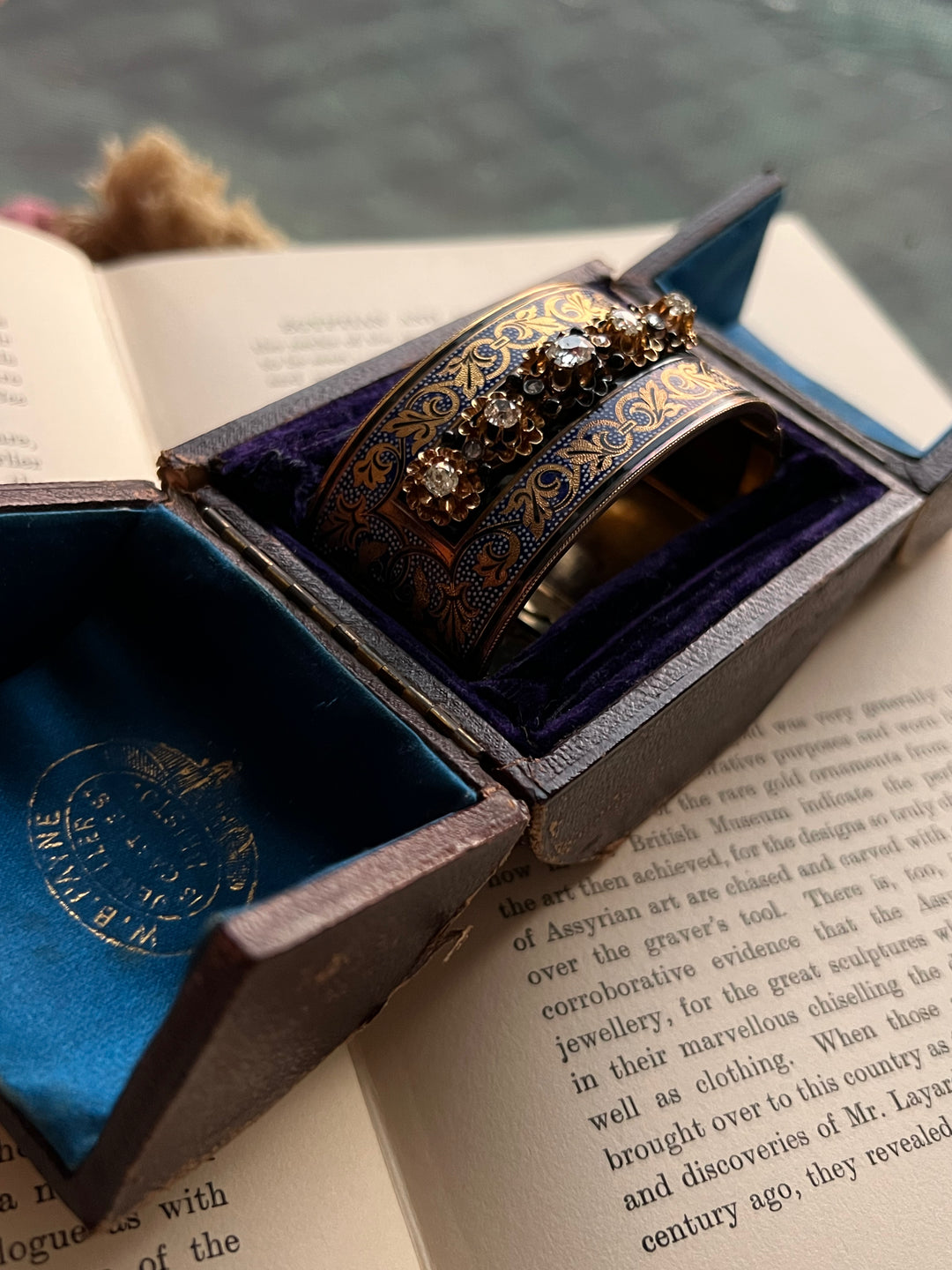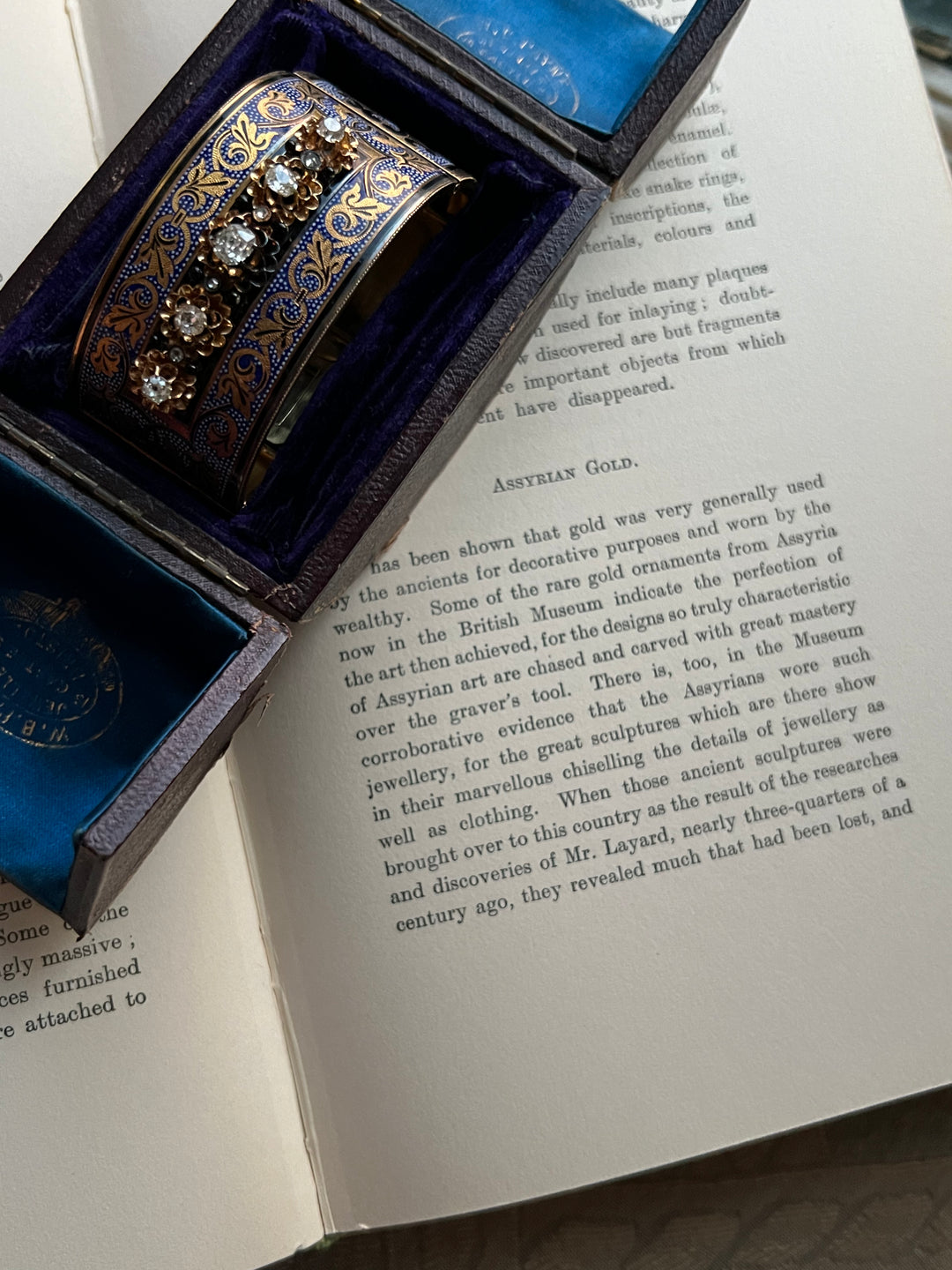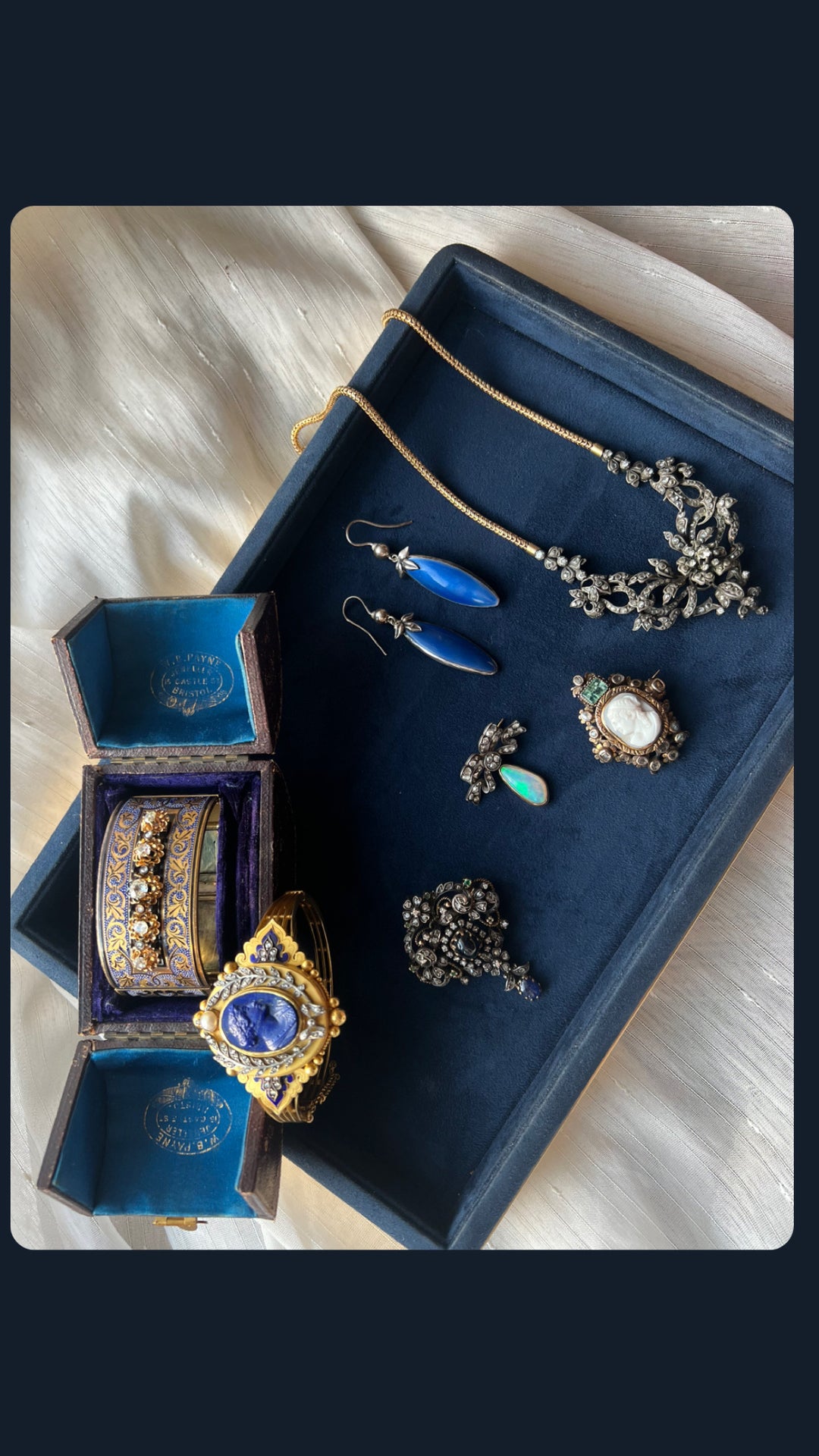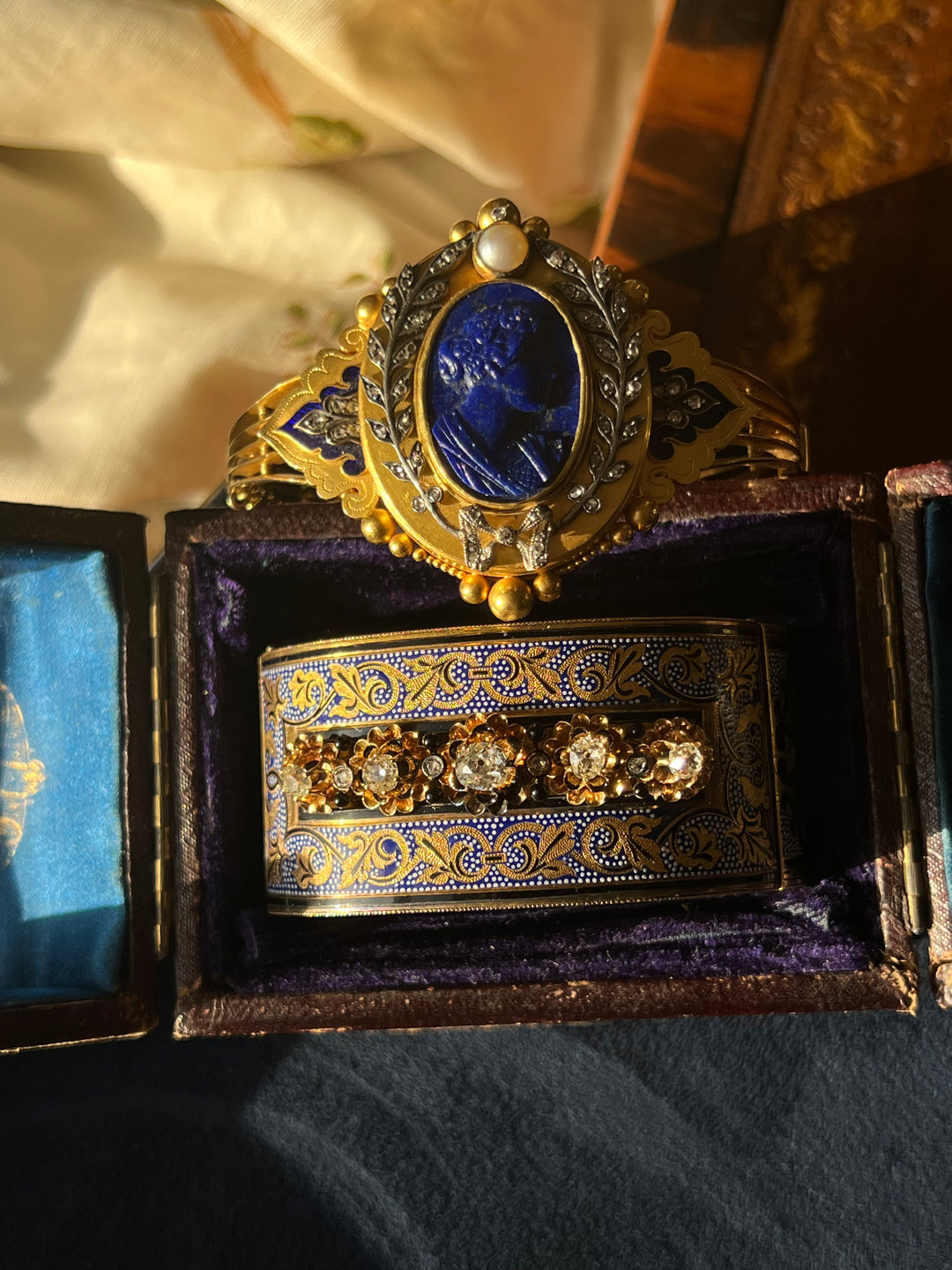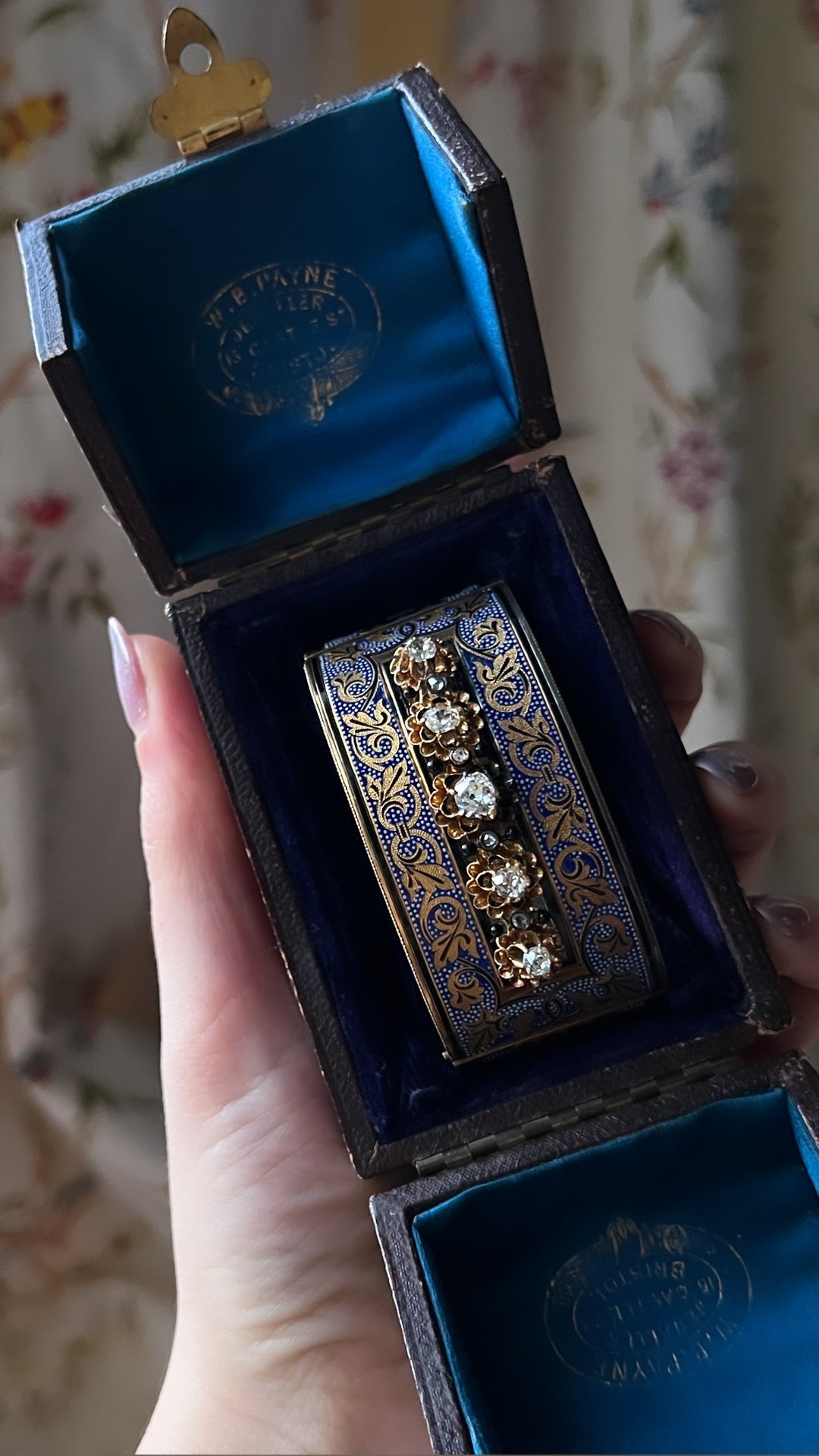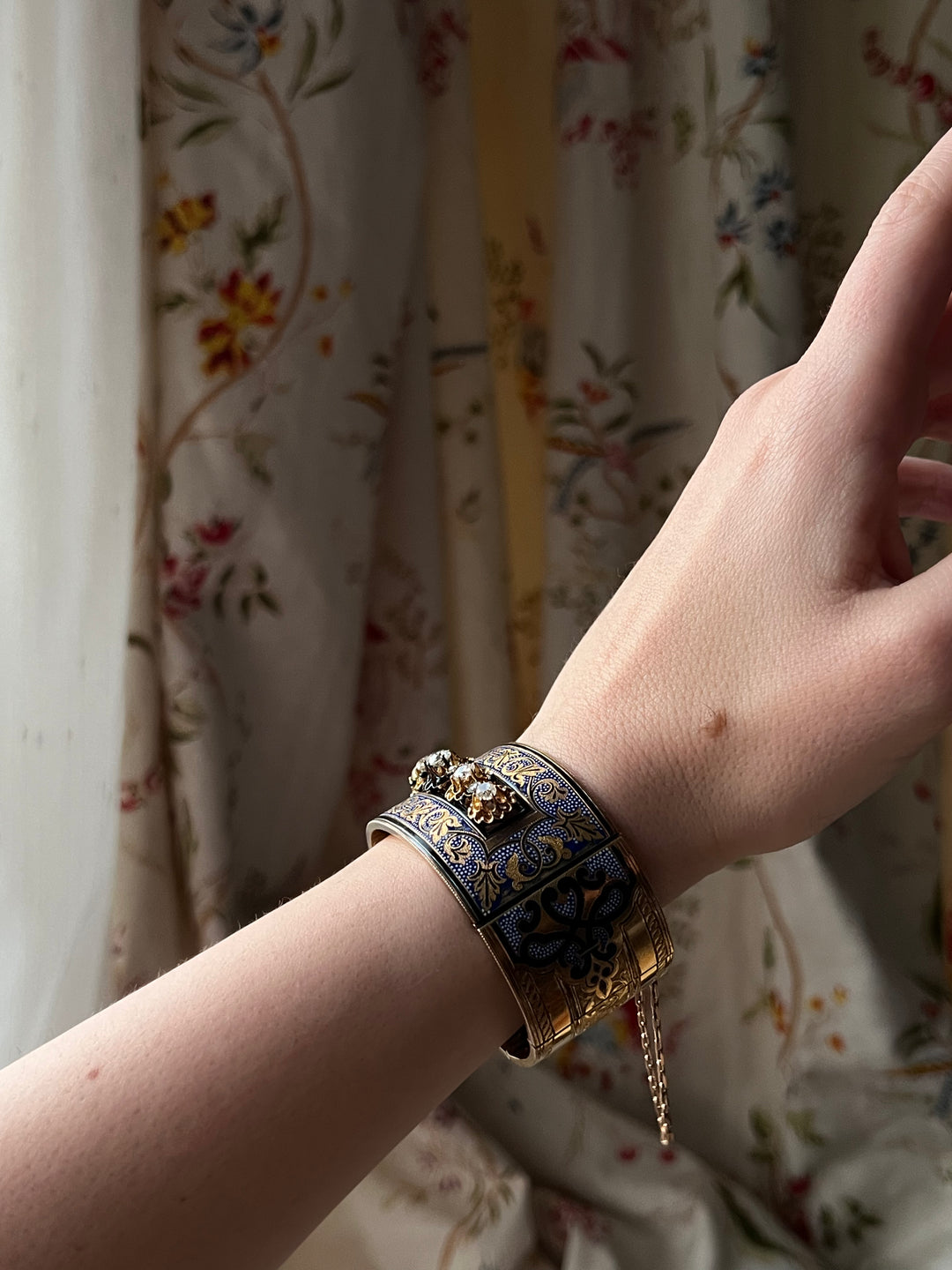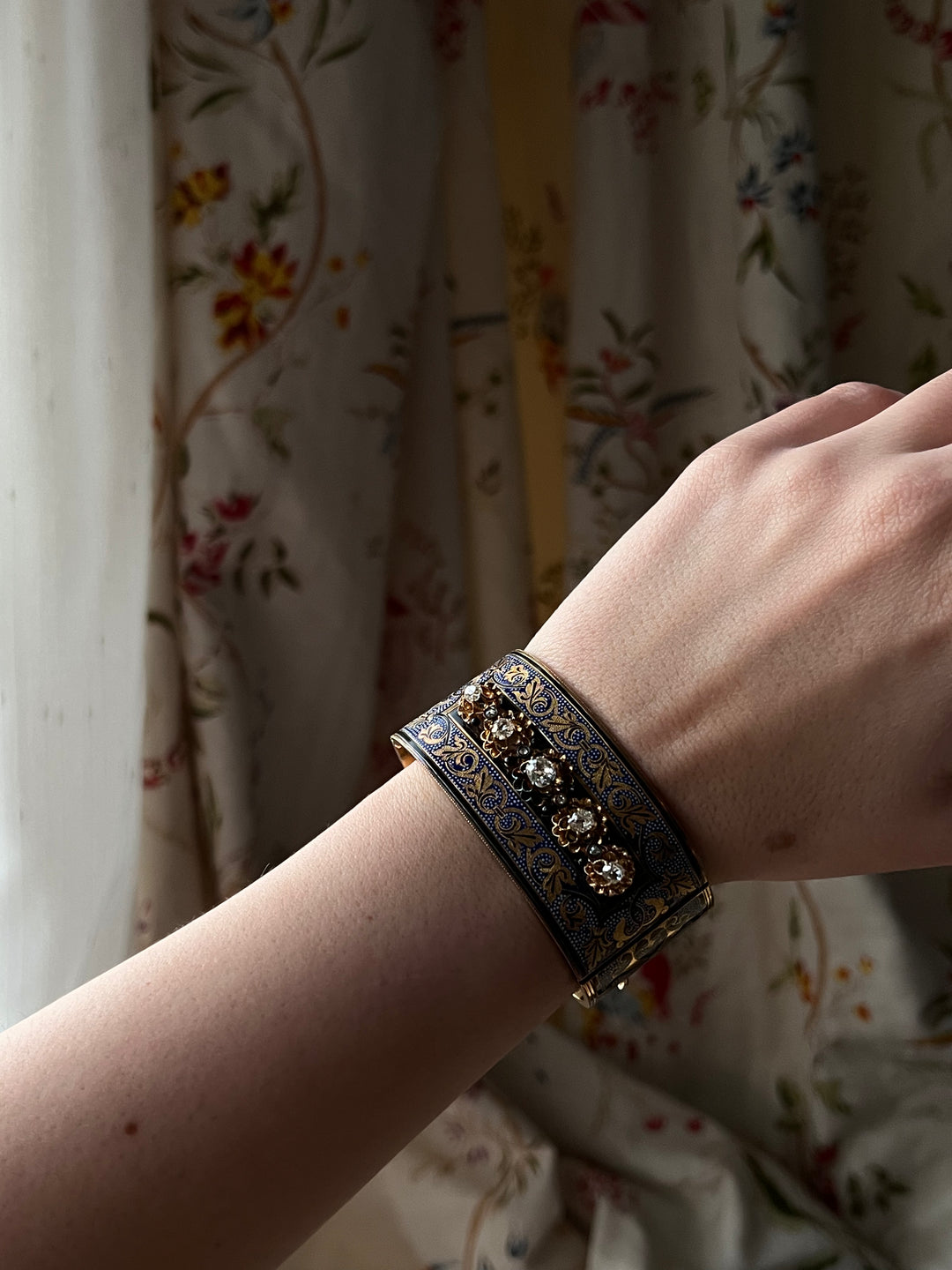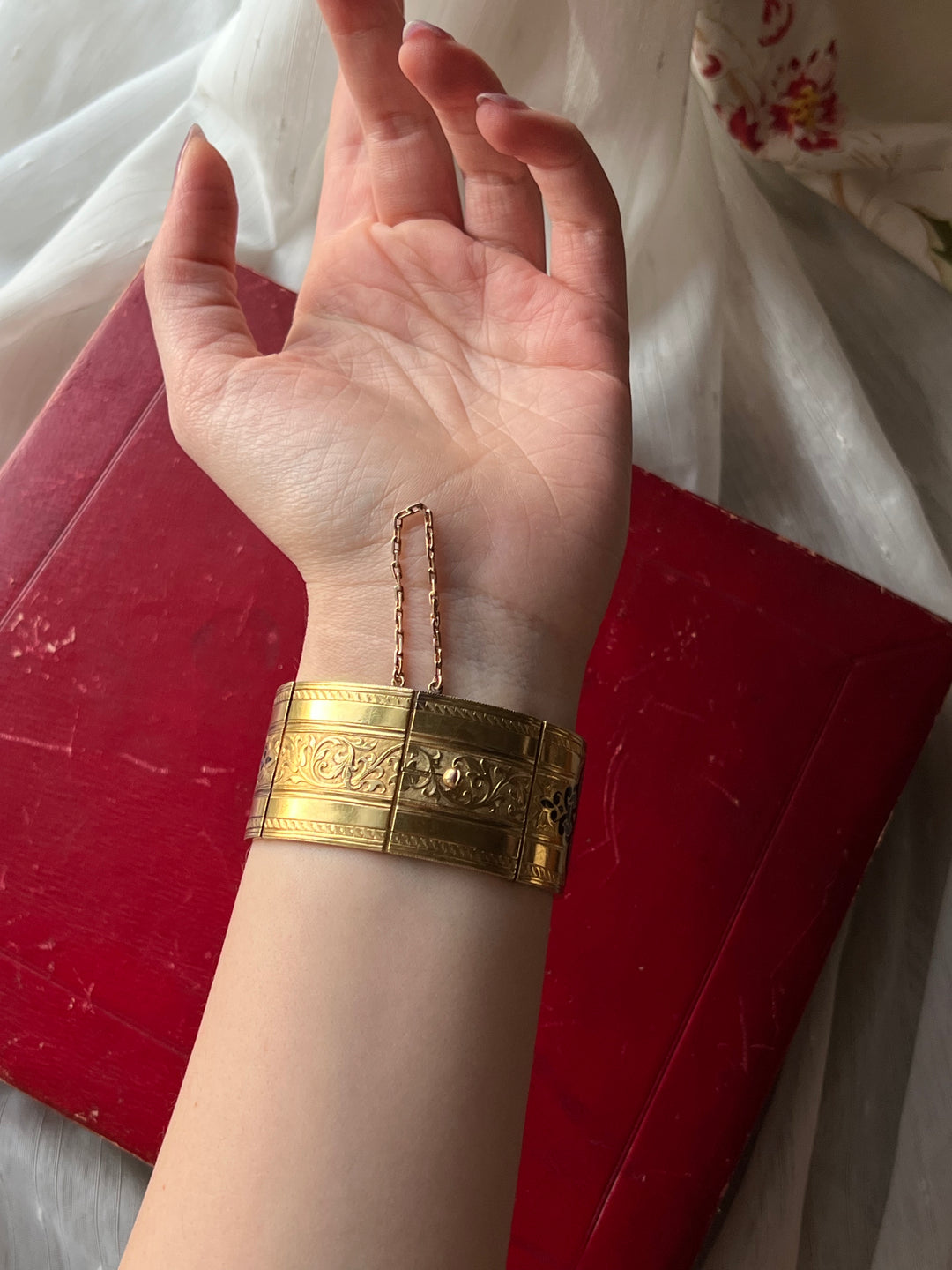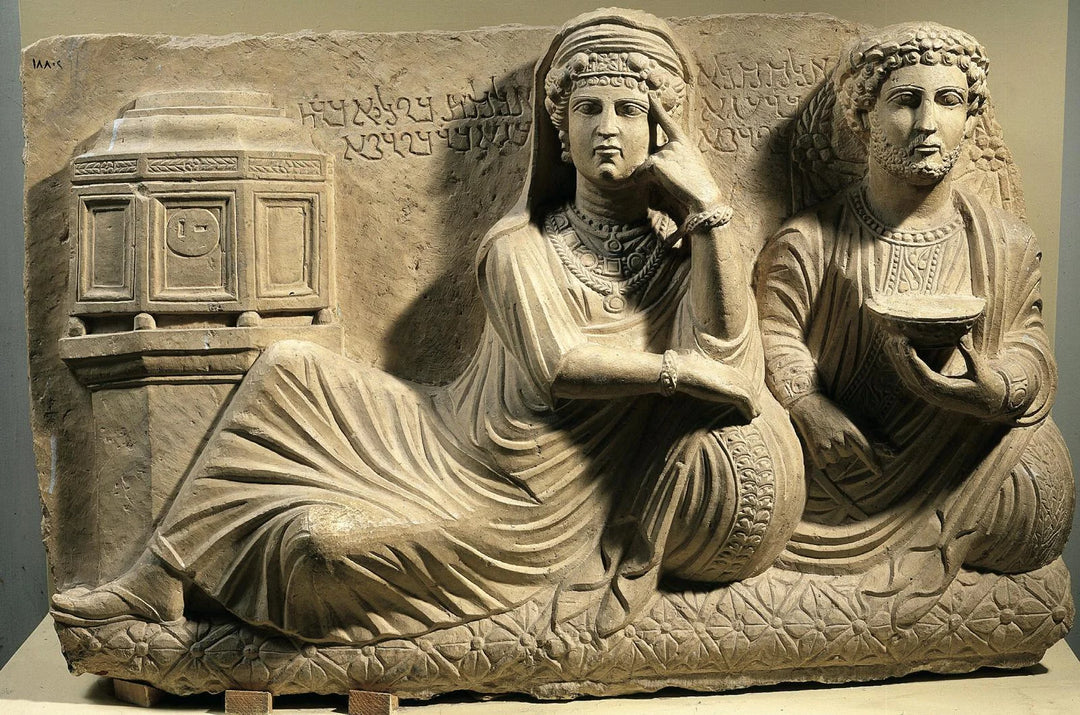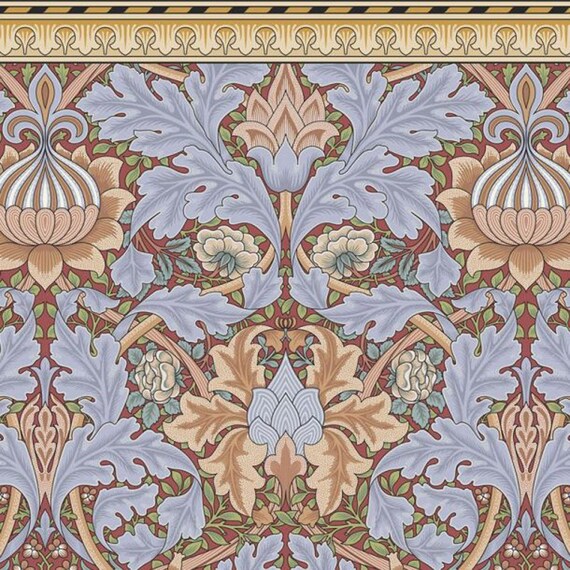Extremely Important Syrian Revival Bracelet Circa 1870
Extremely Important Syrian Revival Bracelet Circa 1870
- Free returns
- Worldwide shipping
- Carbon neutral
- Secure payments
- In stock, ready to ship
- Inventory on the way
One of the most important bracelets I've ever had the pleasure of bringing to the Curio, this amazing Syrian revival bracelet speaks unequivocally to the moment it was created; in near mint condition, this bracelet boasts both black and blue enamel which creates a stunning wash of detail across the face and down the sides in scrolling organic shapes. The patterns used pull both from sculpture such as the Funerary Relief of Mola and Bolaia, from the tomb of Ta'i in Palmyra, Syria. Now on display at the National Museum of Damascus, included in the image appendix. Not only do the leaves echo the trimming down the masculine figure's ensemble, but the bracelets he wears are similar in shape to the peculiar width of this cuff, which was not at all common for the period it was created.
Further artistic overtones are seen in the work of William Morris, the great pioneer of aestheticism, who borrowed heavily from ancient depictions of flora and fauna to adequately outfit the maximilaist walls of fashionable parlors in London during the decade this bracelet was created (also in the image index.) In the original box, this outstanding bracelet with her central pannel of buttercup set diamonds will be a beloved addition to any collection that is comitted to exceptionally rare Assyrian revival pieces.
For further reading, please see page 86 of Antique Jewelery by Burgess, Assyrian Revival in Jewelry in the Age of Queen Victoria.
Materials and Features:
18ct, enamel, old mine cut diamonds estimated at 1.10ctw, VSI1, J-L color.
Age/Origin:
1870's, English
Marks:
None
In original Box signed
WB PAYNE
BRISTOL
Measurements:
6.75"
Weight: 52.1g
Condition: Excellent condition. Minor associated age wear to some enamel of buttercup set diamonds. Overall, this extremely rare bracelet will make a museum quality addition to any collection. We are happy to provide a letter with certification produced by our office of authenticity and importance.
Please view and inspect any photos closely. We endeavor to fully disclose all condition information clearly and concisely, however, please note that what qualifies as excellent condition for historical jewelry differs from modern and contemporary pieces; please take the age of the piece into account when examining the piece. Minor age wear is typical and to be expected for antique and vintage jewelry. Unless otherwise stated, gemstones have not been officially graded for color, clarity, or treatment by GIA; any information provided is our own educated, professional assessment.


